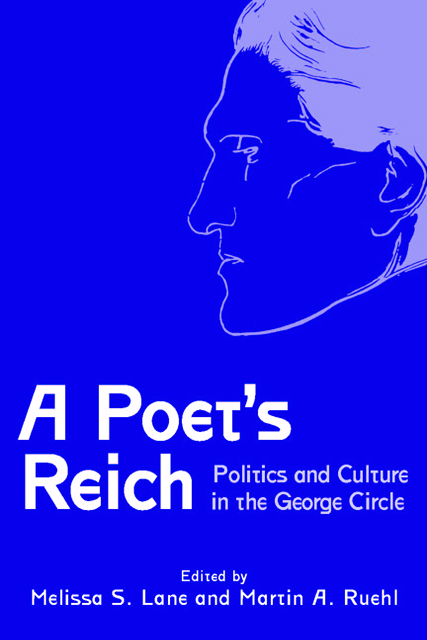4 - The Poet as Idol: Friedrich Gundolf on Rilke and Poetic Leadership
Published online by Cambridge University Press: 10 February 2023
Summary
Whatever Organizes Itself in the shape of a circle, or ring, signals that it intends to contradict the idea of linear progression or evolutionary development. In this context, movement only seems to serve the purpose of completing circles, and the obvious suggestion or implication is that one can, at least potentially, come full circle at any time. Furthermore, forming circles reflects an attempt of kindred spirits to share a certain set of values and beliefs. By the same token, the circle should also be seen as an answer to the ever-fragmenting experience of modernity.
The ring as a dominant poetic motif, or the circle as a particular feature of artistic composition, has in turn often assumed a social, even political, role. This applied to the Romantic era as much as to Wagnerianism and, of course, the George Circle. To date, aesthetic theory has still not explored sufficiently what it means to adhere to the circle principle, both as a pattern of composition and structure of reception.
Stefan George had the vision of a life through the circle of his appointed followers, for the sake of establishing a poetocracy, as it were, with himself as its first mandarin and the “pure” word as its actual ruler. Small wonder that Georg Lukács, among others, was to criticize this circle as a problematic expression of both untimely and inappropriate “Orphic mysticism.”
However, in his Circle, George assumed the role of the untouchable praeceptor verborum, the infallible judge of what was pure and what was impure art. Inevitably, a sense of exaggerated subjectivity prevailed both in George’s literary judgment and his own poetry. But this subjectivity served a particular purpose, as Eugen Gottlob Winkler quite rightly observed in his illuminating piece “Die Gestalt Stefan Georges in unserer Zeit,” written and published in 1936, shortly before he committed suicide. Winkler argued that George’s subjectivity was the expression of a secular priest who was preaching the transubstantiation of the Ich. What remained was an omnipresent gesture that could direct others — members of the Circle, for example — even if they were one day dismissed as heretics. The essence of Winkler’s argument amounts to what could be referred to as George’s fundamental aestheticism rather than what Stefan Breuer was to call the poet’s aesthetic fundamentalism.
- Type
- Chapter
- Information
- A Poet's ReichPolitics and Culture in the George Circle, pp. 81 - 90Publisher: Boydell & BrewerPrint publication year: 2011

